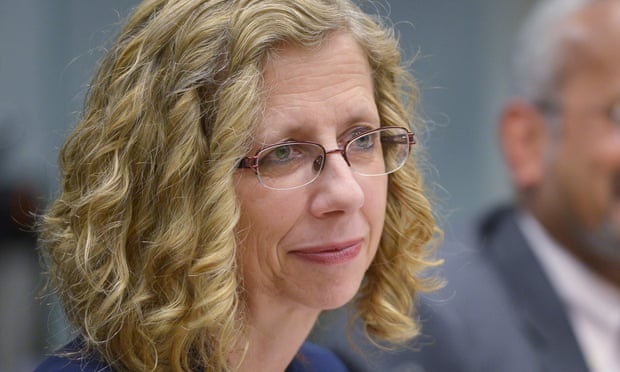A green pandemic recovery could cut up to 25 per cent offpredicted 2030 greenhouse gas emissions and bring the world closer to meeting the 2°C goal of the Paris Agreement on Climate Change, a new UN Environment Programme (UNEP) report finds.

UNEP’s annual Emissions Gap Report 2020 finds that, despite a dip in 2020 carbon dioxide emissions caused by the COVID-19 pandemic, the world is still heading for a temperature rise in excess of 3°C this century.
However, if governments invest in climate action as part of pandemic recovery and solidify emerging net-zero commitments with strengthened pledges at the next climate meeting – taking place in Glasgow in November 2021 – they can bring emissions to levels broadly consistent with the 2°C goal.
By combining a green pandemic recovery with swift moves to include new net-zero commitments in updated Nationally Determined Contributions (NDCs) under the Paris Agreement, and following up with rapid, stronger action, governments could still attain the more-ambitious 1.5°C goal.
“The year 2020 is on course to be one of the warmest on record, while wildfires, storms and droughts continue to wreak havoc,” said Inger Andersen, UNEP’s Executive Director.
“However, UNEP’s Emissions Gap report shows that a green pandemic recovery can take a huge slice out of greenhouse gas emissions and help slow climate change. I urge governments to back a green recovery in the next stage of COVID-19 fiscal interventions and raise significantly their climate ambitions in 2021,” she added.
Each year, the Emissions Gap Report assesses the gap between anticipated emissions and levels consistent with the Paris Agreement goals of limiting global warming this century to well below 2°C and pursuing 1.5°C.
The report finds that in 2019 total greenhouse gas emissions, including land-use change, reached a new high of 59.1 gigatonnes of CO2 equivalent (GtCO2e). Global greenhouse gas emissions have grown 1.4 per cent per year since 2010 on average, with a more rapid increase of 2.6 per cent in 2019 due to a large increase in forest fires.
As a result of reduced travel, lower industrial activity and lower electricity generation this year due to the pandemic, carbon dioxide emissions are predicted to fall up to 7 per cent in 2020. However, this dip only translates to a 0.01°C reduction of global warming by 2050. Meanwhile, NDCs remain inadequate.
Green recovery critical
A green pandemic recovery, however, can cut up to 25 per cent off the emissions we would expect to see in 2030 based on policies in place before COVID-19. A green recovery would put emissions in 2030 at 44 GtCO2e, instead of the predicted 59 GtCO2e – far outstripping emission reductions foreseen in unconditional NDCs, which leave the world on track for a 3.2°C temperature rise.
Such a green recovery would put emissions within the range that gives a 66 per cent chance of holding temperatures to below 2°C but would still be insufficient to achieve the 1.5°C goal.
Measures to prioritise in green fiscal recovery include direct support for zero-emissions technologies and infrastructure, reducing fossil fuel subsidies, no new coal plants, and promoting nature-based solutions – including large-scale landscape restoration and reforestation.
So far, the report finds, action on a green fiscal recovery has been limited. Around one-quarter of G20 members have dedicated shares of their spending, up to 3 per cent of GDP, to low-carbon measures.
There nonetheless remains a significant opportunity for countries to implement green policies and programmes. Governments must take this opportunity in the next stage of COVID-19 fiscal interventions, the report finds.
The report also finds that the growing number of countries committing to net-zero emissions goals by mid-century is a “significant and encouraging development”. At the time of report completion, 126 countries covering 51 per cent of global greenhouse gas emissions had adopted, announced or were considering net-zero goals.
To remain feasible and credible, however, these commitments must be urgently translated into strong near-term policies and action and reflected in NDCs. The levels of ambition in the Paris Agreement still must be roughly tripled for the 2°C pathway and increased at least fivefold for the 1.5°C pathway.
Reforming consumption behaviour critical
Each year the report also looks at the potential of specific sectors. In 2020, it considers consumer behaviour and the shipping and aviation sectors.
The shipping and aviation sectors, which account for 5 per cent of global emissions, also require attention. Improvements in technology and operations can increase fuel efficiency, but projected increases in demand mean this will not result in decarbonisation and absolute reductions of CO2. Both sectors need to combine energy efficiency with a rapid transition away from fossil fuel, the report finds.
The report finds that stronger climate action must include changes in consumption behaviour by the private sector and individuals. Around two-thirds of global emissions are linked to private households, when using consumption-based accounting.
The wealthy bear greatest responsibility: the emissions of the richest one per cent of the global population account for more than twice the combined share of the poorest 50 per cent. This group will need to reduce its footprint by a factor of 30 to stay in line with the Paris Agreement targets.
Possible actions to support and enable lower carbon consumption include replacing domestic short haul flights with rail, incentives and infrastructure to enable cycling and car-sharing, improving the energy efficiency of housing and policies to reduce food waste.
